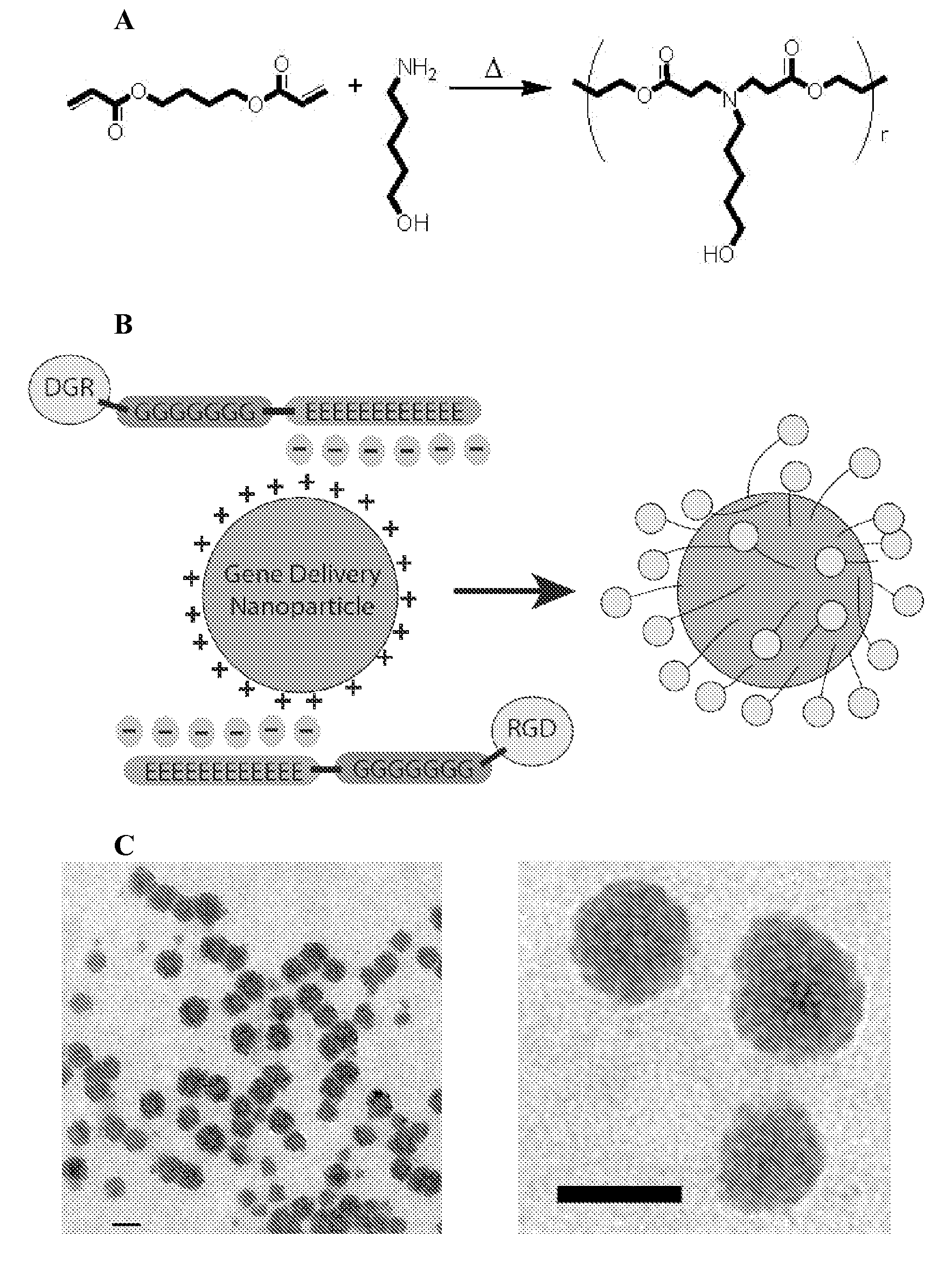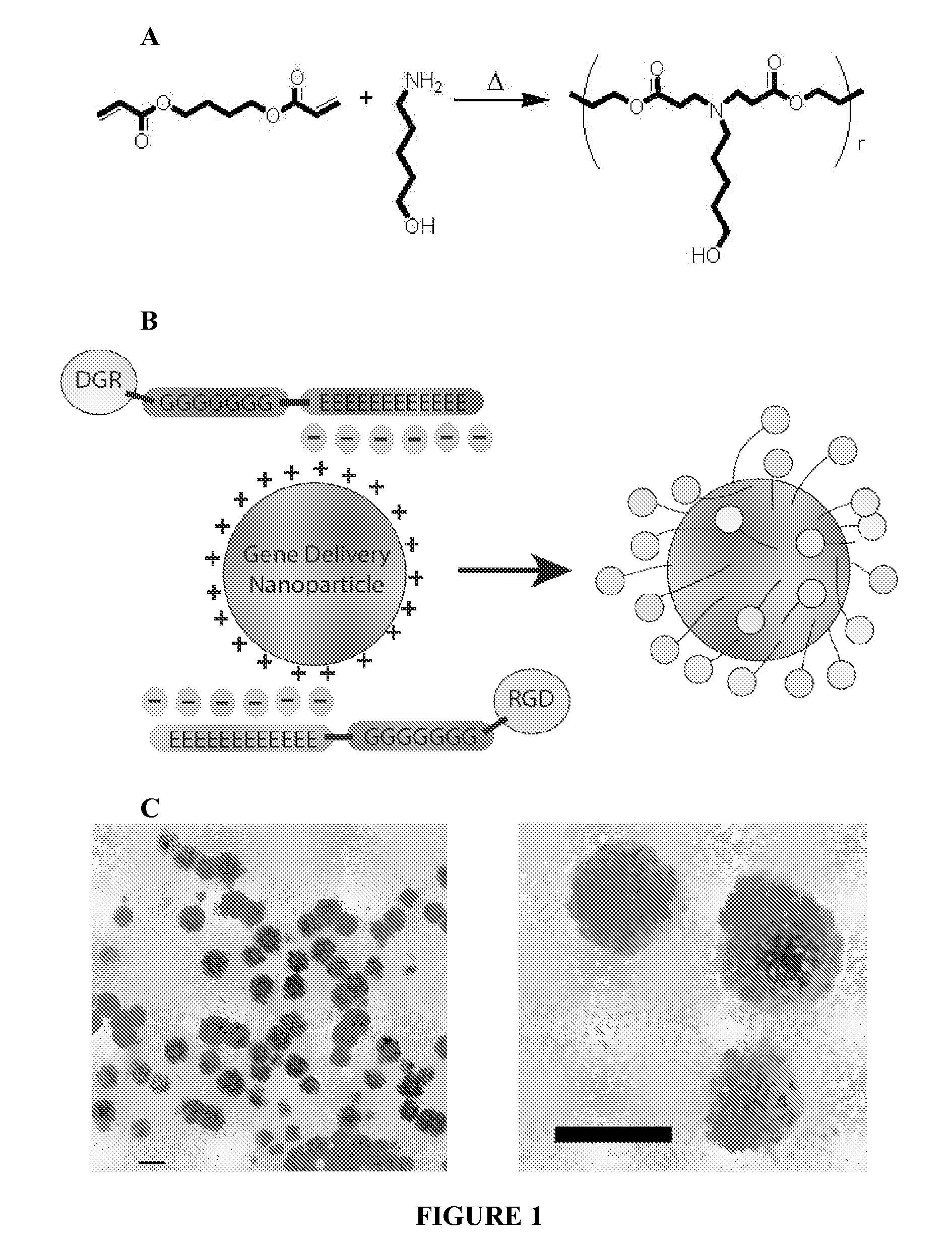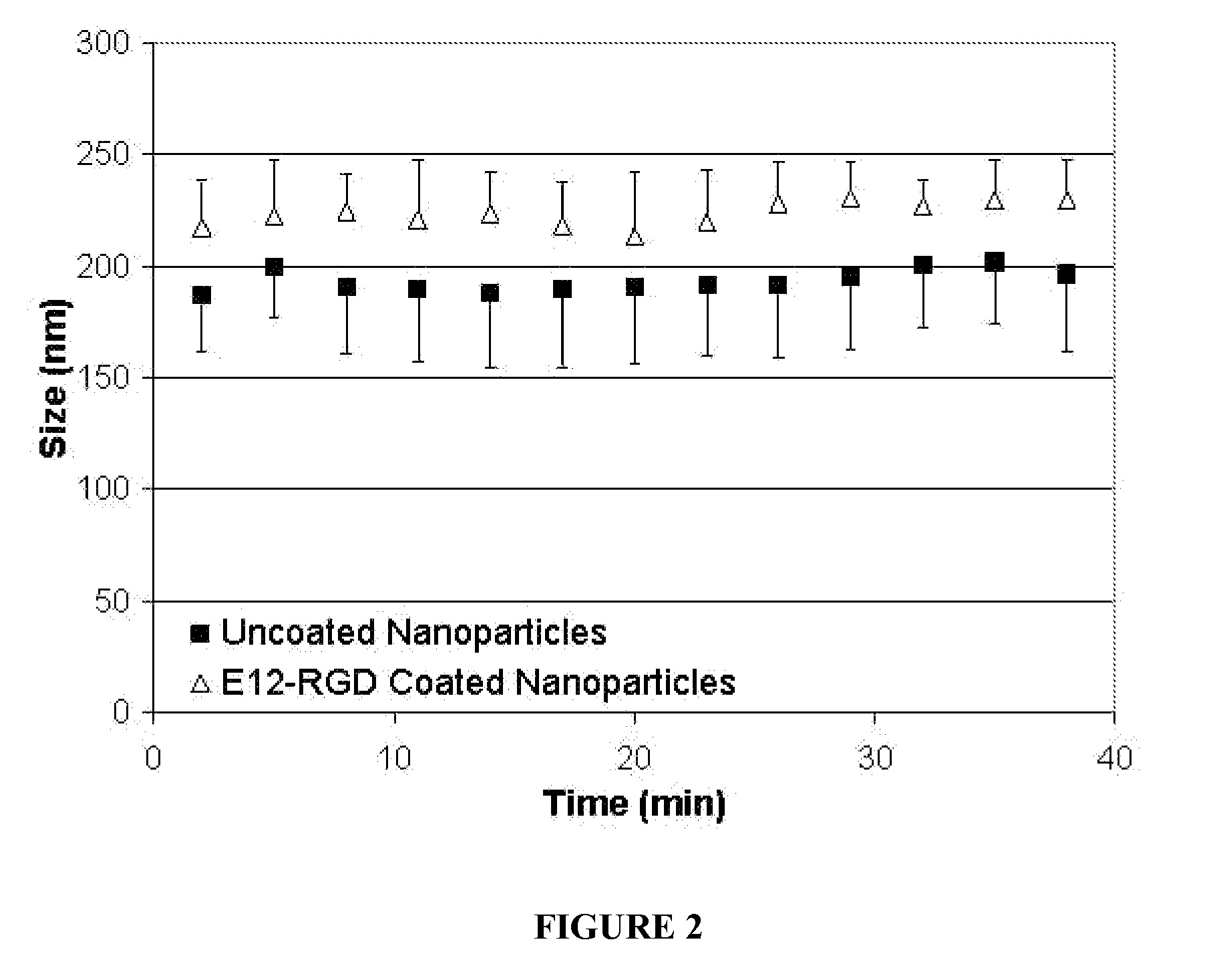Electrostatic coating of particles for drug delivery
a technology of electrostatic coating and particle, which is applied in the direction of drug compositions, microcapsules, vectors, etc., can solve the problems of inability to deliver nucleic acid-based drugs in a safe and effective manner, difficulty in delivering polynucleotides specifically to targeted cells and/or tissues, and current plague of viral delivery, etc., to facilitate receptor-mediated uptake, reduce the net charge, and reduce the non-specific uptake of particles
- Summary
- Abstract
- Description
- Claims
- Application Information
AI Technical Summary
Benefits of technology
Problems solved by technology
Method used
Image
Examples
example 1
Electrostatic Ligand Coatings of Nanoparticles for Nucleic Acid Delivery
[0090]Coatings that reduce the positive charge of gene delivery nanoparticles could potentially reduce non-specific uptake while still enabling receptor-mediated uptake. Gene delivery nanoparticles at overall neutral or negative charge may also be desirable to prevent unwanted serum interactions.
[0091]Here, we show that electrostatic interactions can drive peptide coating of nanoparticles and enable ligand-specific gene delivery to human primary cells. Our general approach to electrostatically coat gene delivery nanoparticles with ligands provides a simple method of ligand addition as well as a mechanism to neutralize nanoparticle charge and reduce electrostatic interactions with undesirable cell types. While we use RGD-containing peptide as a model system to investigate nanoparticle coating and ligand-specific delivery to primary endothelial cells, many other peptide ligand sequences, such as those made from an...
example 2
Electrostatic Ligand Coatings of Nanoparticles for Nucleic Acid Delivery
[0114]E12-PEG-RGD Coatings allow for independent control over the size, charge, and stability of nanoparticles. Covalent PEG attachment to nanoparticles (or to component polymers or biomaterials) have been shown by other researchers to reduce serum interactions and increase circulation time of particles in vivo. Our novel electrostatic approach promises the same benefit of covalent PEG incorporation, but with the ease and generality of self-assembly. This technique also allows for nanoparticles unable to be covalently PEGylated (such as inorganic nanoparticle materials like calcium phosphate) to become PEGylated for multiple uses in drug delivery and other applications. By attaching a ligand at the end of the PEG molecule, specific targeting can be obtained. Blends and layer-by-layer coatings can be used to tune the biophysical properties of the complexes and their overall efficacy.
[0115]PEG only (no ligand) coa...
example 3
Electrostatic Coating Composed of Cationic Peptides / Ligands
[0117]Polylysine-based coats enhance overall transfection efficacy of poly(β-amino ester) / DNA complexes. Cationic, lysine-based peptide coats were found to increase transfection of HUVECs at low weight ratios of polymer to DNA as shown in FIG. 11. At 30 w / w C32 / DNA, there is an increase in the percentage of HUVECs transfected in serum by 3-fold depending on the amount of K8-PEG-RGD added. As polymer weight increased, the benefit of adding peptide decreased. At 40 w / w C32 / DNA, adding K8-PEG-RGD had no effect on transfection. Changing the length of residues in the peptide coat from K8-PEG-RGD to K16-PEG-RGD produced a similar result at all polymer weight ratios tested. Thus, multiple length ligand coats can enable increased efficacy. Even though the K8-PEG-RGD coating increases transfection, it does not enable ligand specific targeting as the nanoparticles coated with the scrambled K8-PEG-RDG sequence transfected just as well ...
PUM
| Property | Measurement | Unit |
|---|---|---|
| Length | aaaaa | aaaaa |
| Length | aaaaa | aaaaa |
| Zeta potential | aaaaa | aaaaa |
Abstract
Description
Claims
Application Information
 Login to View More
Login to View More - R&D
- Intellectual Property
- Life Sciences
- Materials
- Tech Scout
- Unparalleled Data Quality
- Higher Quality Content
- 60% Fewer Hallucinations
Browse by: Latest US Patents, China's latest patents, Technical Efficacy Thesaurus, Application Domain, Technology Topic, Popular Technical Reports.
© 2025 PatSnap. All rights reserved.Legal|Privacy policy|Modern Slavery Act Transparency Statement|Sitemap|About US| Contact US: help@patsnap.com



